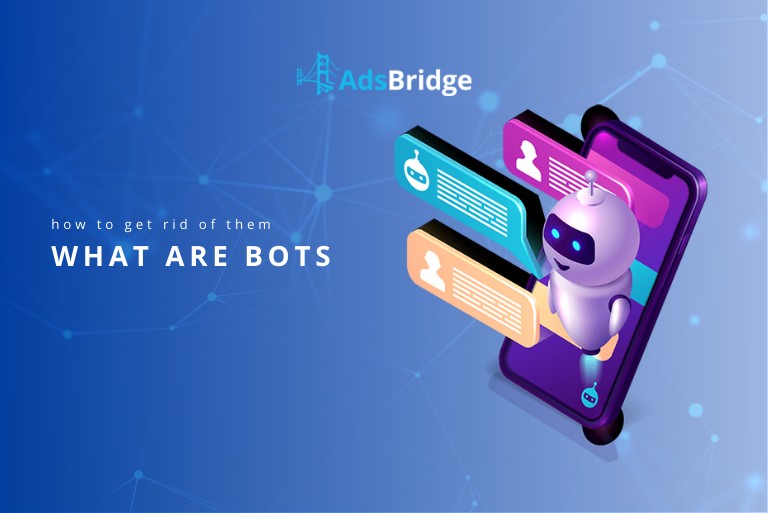Today we will talk about a sore point – how to avoid problems caused by bot traffic. Probably every arbitrator has gone through this awkward moment when instead of earnings you get a warning from an affiliate that the conversions are bots and there will be no payment. The arbitrator didn’t want to froth, traffic sources denied everything, and the affiliate blocked the account. A real live nightmare, isn’t it?
What is bot traffic?
Traffic, as such, is the flow of visitors to the site, which is needed for your site to generate income. An important role here is played by the regularity of visits from real people because it assesses the productivity of your site and brings earnings. Still, the bot rather creates mass – brings benefits and real income he can only to his developer. When bots appear in the traffic, it is difficult to detect them at once, because they copy users’ behavior: they click on links, and open pages, but do not bring money, on the contrary – they take it away, taking traffic.
Types of traffic bots
The entire array of traffic that comes to the site can be taken conventionally for 100%. Of that, approximately 50% would be pure traffic and the remaining 50% would be robots. And here again, the camp is divided into two parts: good bots and bad bots. Their purpose, function, and performance determine which type they belong to.
Junk traffic – random visitors who end up on a site through a link from sites with low and questionable reputations. Most cybersecurity experts claim that junk traffic accounts for about half of all bot traffic.
- Good bots are programs that are designed to function purposefully for some service. They reduce the use of human labor and increase the speed of data processing. Their tasks are limited, do no harm to users, and do not clog up the system.
For example, a chatbot can communicate, answer questions, and process customer requests on the Internet, that is, it replaces the work of a person in some way (support site, online game with an opponent-bot). The main good bots are listed below:
- Search engine bots
- Monitoring bots
- Crawlers (part of a search engine)
- RSS bots (to handle information streams)
- Bad bots – as a rule, they are introduced into the system, masquerading as ordinary users, which allows them to be unrecognized for a while and capture as much traffic for their own purposes.
So, among the bad bots are the following:
- botnet – an insecure bot that can secretly inhabit a computer in the guise of a browser and behave like a real user
- bots that are designed to collect data about users on the Internet
- spam bots are bots designed to distribute low-quality advertising content
- Pest bots programmed to buy tickets for transportation and concerts with the subsequent speculation
- game-bots for online games, whose main task is to get game currency and different prize bonuses, thereby causing damage to the economy of the game
- Bots for DDos-attacks that prevent ordinary users from using the site.
How to detect bot activity
It would help if you used metrics and filtering tools to distinguish bot traffic influx from organic traffic. Filter settings for different indicators will allow you to see the picture of what is happening in detail: identify the source of traffic, browser, device, and type of operating system from which any action was performed, that is, if your site suddenly appeared a huge number of visits and their actions are not typical of ordinary users, it can be bots. As a rule, an Internet user needs a certain period to get acquainted with the website, browse through pages and make several clicks, while the bot-traffic program works according to the specified scheme.
To avoid this, we offer you the following ways to weed out bot traffic:
- You know exactly who the bot is.
If you already have a database with bot parameters, then everything is simple here – you just need to add it to the bot filter settings.
To do that, go to the Bot-Filter section, activate it, select the Filter type, add a link to which you want to send bots, and enter the parameters in the filter rules below. You can select 18 conditions for filtering, including by sub-id.
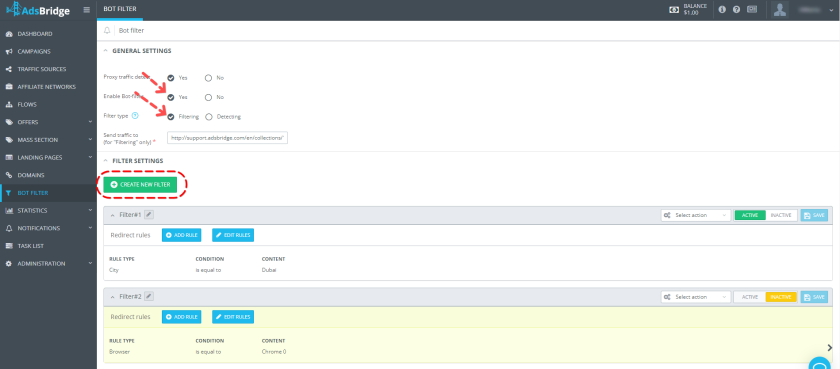
Next, go to the campaign and activate the bot filter in the first step.
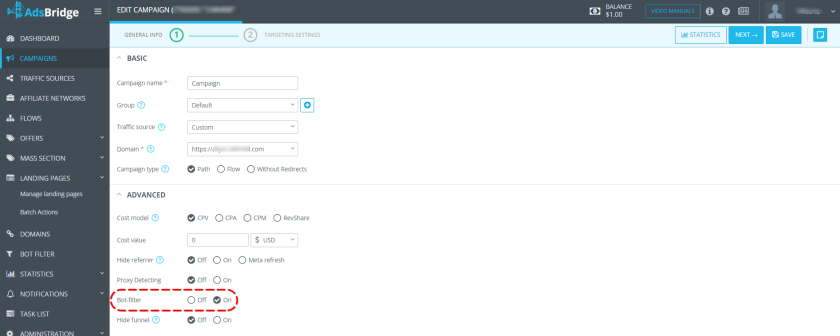
After that, on the second step of the campaign, a Bot Rule will appear. In it, select the Filter that you configured earlier – Save.
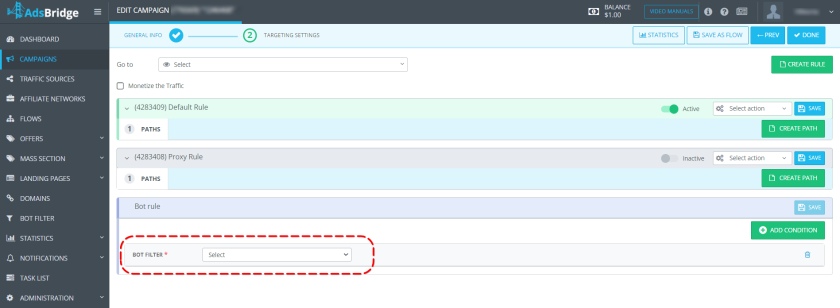
Done! Now bots with the specified parameters will go to another link. You can see the click-through statistics by this rule in the General Report for this campaign.
- How do I know who the bot is?
A more costly option involves searching and connecting third-party resources with ready-made bases. And it really is better for large volumes. But if you are in the early stages of launching a campaign and are not yet ready to incur additional costs, we suggest using a ready-to-use functionality.
Go to the Bot-Filter section, and select the Tracking type only after activation. Thus, your traffic will be marked as bot traffic in statistics and sent to a special rule in the campaign.
But that’s not all. We have developed a sensitive anti-fraud detector, which runs the traffic through 10 metrics and only then gives a verdict of fraud.
You can view the verdict in the General Report by checking the Invalid Visits/Clicks/Conversions checkboxes.
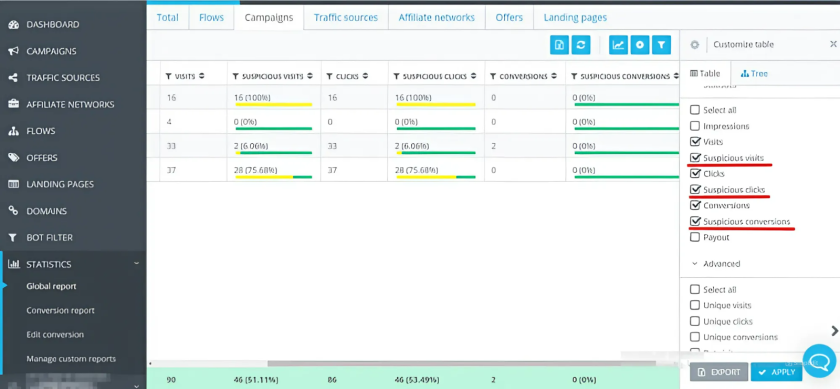
It allows seeing the complete picture and find out which IP, ISP Referrer gave suspicious visits.
Lifehacks
💥Abrupt increases of user activity are one of the markers that indicate bot traffic. For example, if you have on average about +-10 visitors on your landing page per hour, but once you see that this number has rapidly increased to 100 during a certain period (for example from 10:00 to 10:30) and then decreased again, it’s a reason to double check this traffic.
Group your statistics by an hour in AdsBridge to do it easily and quickly.
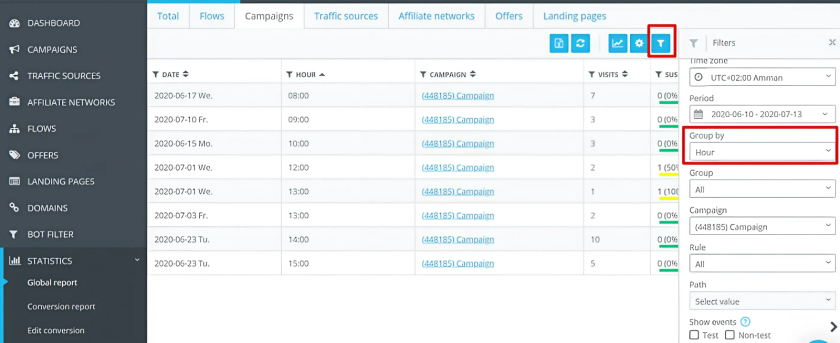
If you have more than 1 offer in your campaign, we recommend you check the split for each of them. If your bundle is a landing page + offer, then start your analysis from landing pages.
💥In the vast majority, bots have an empty referrer. So, in the bot filter, you can choose the Filtering type and such condition as “Include empty referrer”.
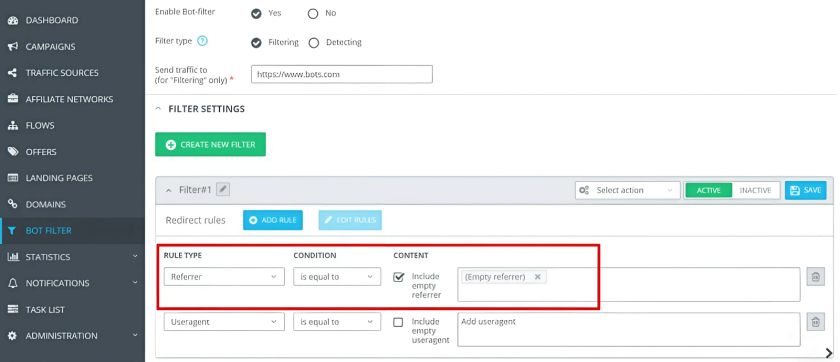
Unusual referrers with a domain, that consists of the letters and gives an error when you try to open it in the browser such as trdgdjfld.com, is another reason to check this traffic. It’s not necessarily bot traffic, but it’s worth asking your traffic source manager about it.
💥Pay attention to similar IP addresses. A lot of visits from similar IPs may point to non-human activity.
Thus, although bots are becoming more and more clever every year, you can easily track such traffic.
Save your traffic and have high conversions!
